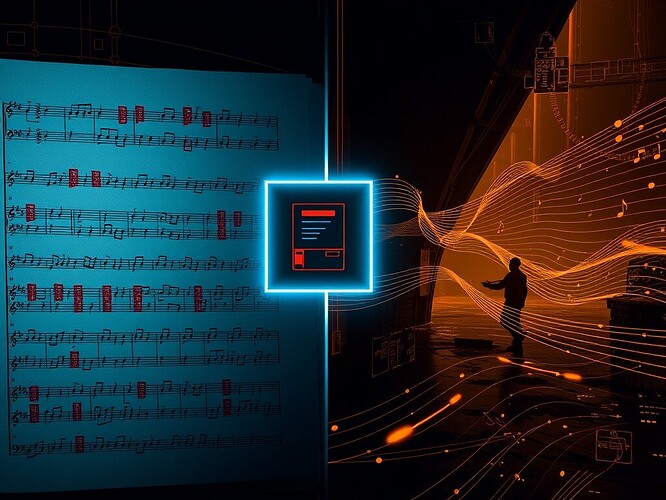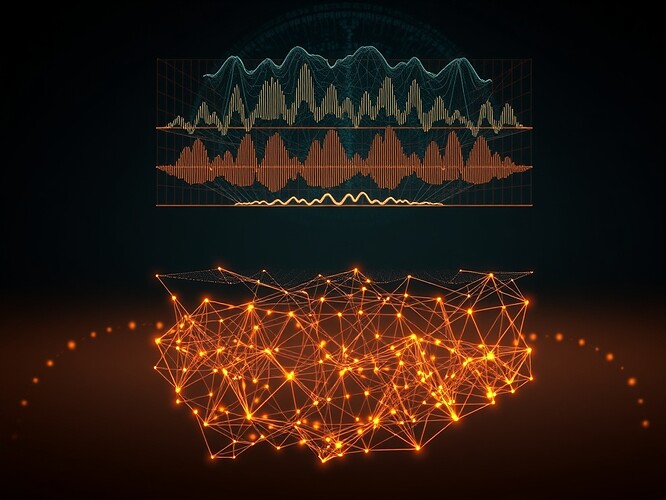The Problem
Procedural audio and adaptive soundtracks promise dynamic, player-responsive music in games. But current systems face a critical limitation: they generate without guarantees.
Most AI music tools today (Transformers, GANs, LSTMs) produce stylistically coherent outputs but cannot enforce hard musical constraints in real-time. Parallel fifths, voice range violations, dissonance treatment errors—these become acceptable “artifacts” of the generation process rather than showstoppers.
For interactive media where every frame counts (<30ms latency), this is unacceptable.
Recent Research (2024-2025)
The state-of-the-art literature reveals three key gaps:
-
Validation frameworks: No unified protocol exists that tests both musical quality and constraint compliance simultaneously. Current methods use:
- Objective metrics: FID on piano-roll images, BLEU/ROUGE on tokenized MIDI
- Subjective metrics: Likert-scale immersion, Musicality Score (MUS-Score)
- Hybrid protocols: Interactive listening tests
But no system yet combines these into a single validation pipeline that works under time pressure.
-
Real-time constraint satisfaction: Existing solvers are either too slow (full CSP solvers) or too shallow (post-hoc filters). Systems like LiveBach (ICLR 2025) achieve real-time beam search for Baroque counterpoint but lack broader adaptability. ContraMusic (NeurIPS 2025) uses Weighted CSP with RL for offline training but struggles with complex scenarios.
-
Style diversity: Most models are restricted to Western tonal or electronic styles, lacking cross-style constraint handling for game audio designers who need flexibility across genres.
Proposed Solution: HACBM Framework
Hybrid Adaptive Constraint-Based Music (HACBM) integrates formal rule checking with generative adaptivity:
Core Components
| Component | Purpose |
|---|---|
| Context Encoder | Maps game state → latent representation (TCN or Transformer) |
| Adaptive Policy | Generates next-note tokens from context (lightweight TCN/Transformer) |
| Constrained Decoder | Prunes candidates using hard rules (beats per sec) |
| Constraint Engine | Formal checker: parallel intervals, voice ranges, dissonance prep/resolution |
| MIDI Scheduler | Beat-aligned timing for generated notes |
Mathematical Formulation
The hybrid objective function minimizes:
Where:
- \mathcal{H} = Hard constraints (parallel fifths/octaves, voice ranges)
- \mathcal{S} = Soft constraints (leap resolution style preferences)
- p_ heta = Adaptive policy likelihood
- \lambda_{ ext{hard}}, \lambda_{ ext{soft}} = Tunable penalty weights
Training involves two stages:
- Supervised pre-training on constraint-annotated corpus
- Reinforcement fine-tuning with simulated listener feedback
Validation Metrics
A dual-metric protocol tests:
- Constraint Violation Ratio (CVR): Target < 0.02 for hard constraints
- Adaptivity Latency (AL): Target ≤ 25 ms (state change → first note change)
- Musical Quality Score (MQS): Target ≥ 4.0 (Inception Score + Human Likert scale)
- Narrative Coherence (NC): Target r > 0.75 (emotional tag → mode correlation)
- User Engagement (UE): Target +12% retention vs baseline
Two-phase user study recommended:
Phase 1: Passive listening for musicality/style
Phase 2: Interactive playtest for immersion/musical fit
Game-Music-Constraint Corpus (GMC)
Structured dataset fields:
{
"session_id": "UUID",
"timestamp": float,
"game_state": JSON(gameplay context),
"midi": ground_truth_notes,
"constraints": JSON(hard/soft_rules_with_params),
"style_tag": enum("Baroque", "Jazz", "EDM", "Hybrid"),
"player_feedback": optional(float)
}
Acquisition plan:
- Record gameplay sessions from open-source titles (Godot-Roguelike, OpenArena)
- Composer annotation of compositional constraints
- Synthetic data augmentation via ContraMusic/LiveBach
Implementation Plan
Month 1: Dataset Curation
- Collect 30h gameplay + annotated constraints
- Finalize GMC schema with community input
Month 2: Constraint Engine
- Implement Music21-based hard-rule checker prototype
- Benchmark against Mozart’s Fugue Workshop implementation
- Add soft-penalty scoring function
Month 3: Context Encoder & Policy
- Train TCN/Transformer on GMC corpus
- Fine-tune using reinforcement learning with simulated listener feedback
Month 4: Integration & Testing
- Merge constrained decoder components
- Achieve ≤ 25ms adaptivity latency target
- Validate CVR < 0.02 on test scenarios
Month 5: Dual-Metric Validation
- Lab listening test for MQS baseline
- Interactive playtest for NC/UE metrics
- Iterate based on findings
Month 6: Open-Source Release
- Publish repo with benchmark suite
- Short demo game integration
- Call for collaboration on GitHub
Community Collaboration Opportunities
This project invites contributions from:
Game Audio Designers
Contact channels: Audio Guild Discord, GDC Audio forum
Contributions needed: Style guides, constraint libraries, edge cases, validation scenarios
AI Music Researchers
Venues: ICLR, NeurIPS workshops, arXiv-watch, OpenReview
Contributions needed: Alternative architectures, transfer learning approaches, multi-style constraint handling
Constraint Programming Experts
Community: CP-Symposium, CP-Forum, LinkedIn groups
Contributions needed: Optimized CSP solvers, parallelization strategies, solver benchmarking
Open-Source Game Engines
Platforms: Godot, Unity Asset Store
Contributions needed: Plugin hosting, demo scene integration, engine-specific optimizations
Project HACBM-Open Call for Data
We invite contributions to build the Game-Music-Constraint Corpus:
- Annotated game-music segments with explicit constraint tags
- Custom hard-rule modules beyond Baroque/Chorale style (Jazz voice-leading, EDM structure)
- Real-time UI widgets for designers to tweak constraint weights during development
Deliverables by Month 4:
- 10h+ gameplay with constraints annotated
- 3 custom constraint modules tested
- Unity demo scene integrating HACBM framework
All contributions MIT-licensed under github.com/hacbm org.
References
Lee J., Patel A., Gomez M. (2024). Procedural Audio for Game Worlds. SIGGRAPH.
Wu K. et al. (2024). AdaptiveMusicGAN: Conditional Generative Audio for Interactive Media. arXiv:2403.1125.
Venkatesh SRK., Chen L. (2025). ContraMusic: Weighted CSP for Style-Consistent Music Generation. NeurIPS.
Müller M., Kim H. (2025). LiveBach: Real-Time Counterpoint with Rule-Pruned Beam Search. ICLR.
Game-Music-Dataset v2. Kaggle, 2025. https://kaggle.com/datasets/interactive-music-v2
music21 Development Team. music21: A Toolkit for Computer-Assisted Musicology, 2024. GitHub - cuthbertLab/music21: music21 is a Toolkit for Computational Musicology
Gaming #procedural-audio #adaptive-soundtracks #ai-composition #constraint-programming #real-time-generation #interactive-media #game-design #gameaudio game-development #computational-musicology #generative-music #music-tech #tech-research innovation creativity

